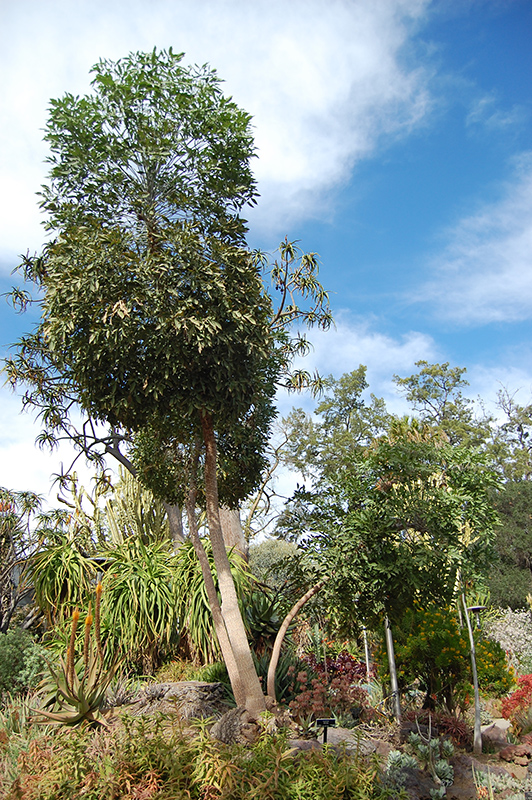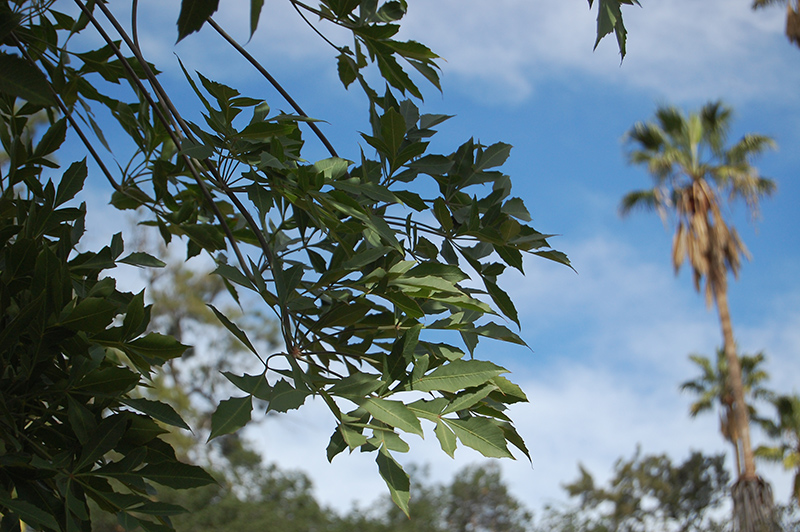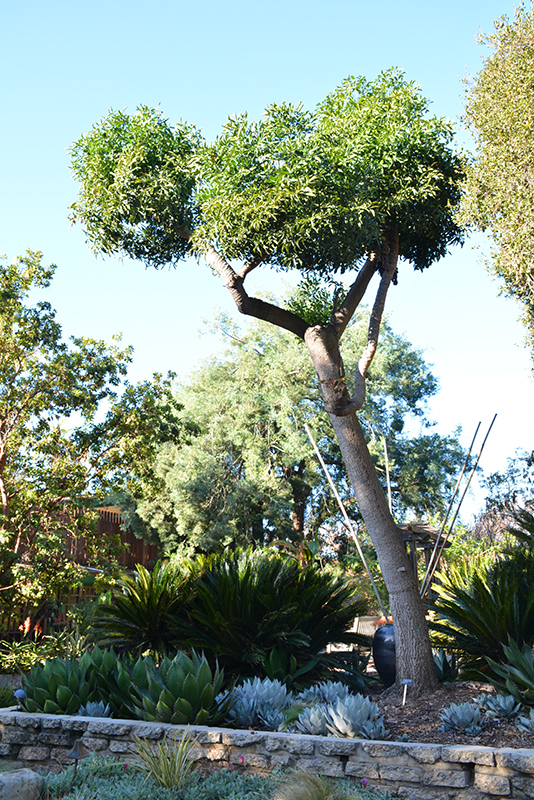Height: 30 feet
Spread: 20 feet
Sunlight:
![]()
![]()
Hardiness Zone: 9b
Other Names: Common Cabbage Tree, Spiked Cabbage Tree
Description:
An unusual attractive tree, featuring large, dissected green leaves held in large heads at the end of twisting stems; small greenish-yellow flowers on short spikes in late spring; older plants are very drought tolerant; protect from frost
Ornamental Features
Cabbage Tree is primarily valued in the landscape for its ornamental upright and spreading habit of growth. It features subtle spikes of chartreuse flowers at the ends of the branches from late spring to early summer. It has attractive forest green evergreen foliage. The lobed compound leaves are highly ornamental and remain forest green throughout the winter. The furrowed gray bark and tan branches are extremely showy and add significant winter interest.
Landscape Attributes
Cabbage Tree is an evergreen tree with an upright spreading habit of growth. Its average texture blends into the landscape, but can be balanced by one or two finer or coarser trees or shrubs for an effective composition.
This is a relatively low maintenance tree, and should never be pruned except to remove any dieback, as it tends not to take pruning well. It is a good choice for attracting birds to your yard. It has no significant negative characteristics.
Cabbage Tree is recommended for the following landscape applications;
- Accent
- Shade
- Vertical Accent
- General Garden Use
Planting & Growing
Cabbage Tree will grow to be about 30 feet tall at maturity, with a spread of 20 feet. It has a low canopy with a typical clearance of 4 feet from the ground, and is suitable for planting under power lines. It grows at a medium rate, and under ideal conditions can be expected to live for 40 years or more.
This tree does best in full sun to partial shade. It is very adaptable to both dry and moist locations, and should do just fine under average home landscape conditions. It may require supplemental watering during periods of drought or extended heat. It is not particular as to soil pH, but grows best in rich soils. It is somewhat tolerant of urban pollution. This species is not originally from North America.




